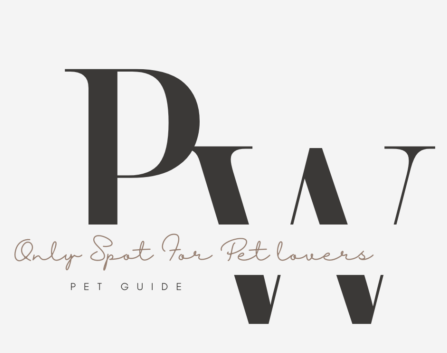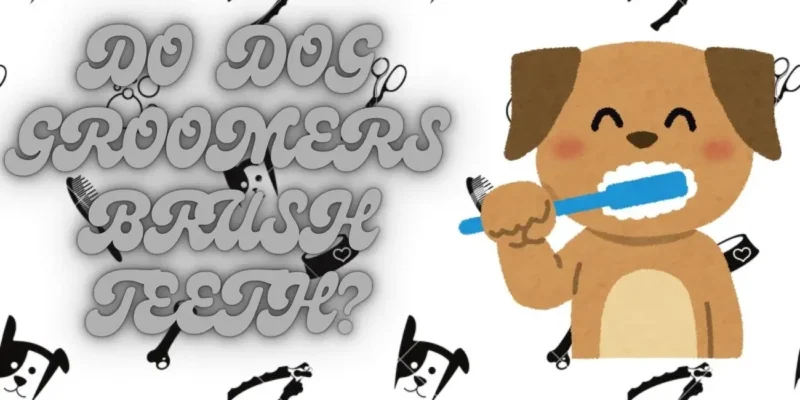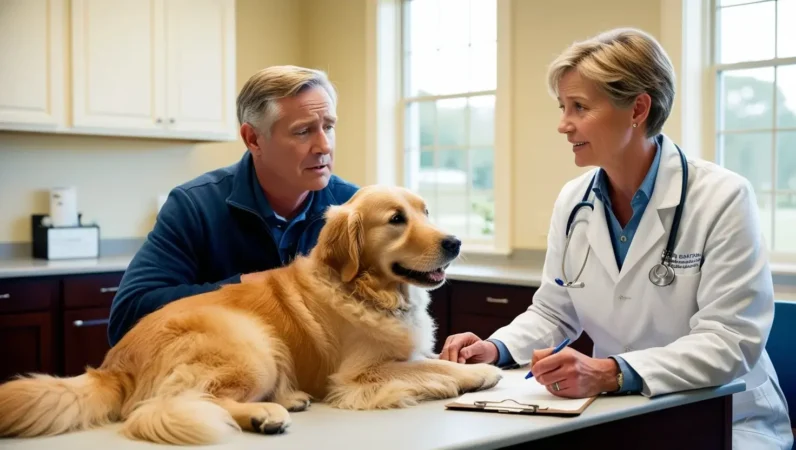Dog groomers offer more than just bathing and fur care for our fur babies—they also help with a dog’s dental hygiene. Many grooming businesses include teeth cleaning as an add-on option in their grooming packages. This service is beneficial for pet owners who want to maintain their dog’s oral care but may find it challenging to do it themselves. While not all groomers are medically licensed, they undergo training and schooling to handle brushing and basic tooth cleaning safely.
This basic tooth cleaning offered by trained groomers supports self-care and hygiene, helping to prevent buildup that could otherwise lead to painful issues. For a deeper cleaning and to ensure safety, however, veterinarian oversight is recommended, especially if medical needs are involved. This balance between professional oral care and at-home maintenance allows pet owners to feel confident that their pets are receiving the care they need for a happy, healthy smile.
WHAT IS TEETH CLEANING?
Cleaning a dog’s teeth is not just about making them look good; it’s a crucial part of their oral hygiene. This process involves removing tartar and plaque that accumulate on the teeth, especially above and below the gumline. Keeping your pet’s mouth healthy is essential to prevent infections and decay, which can lead to more significant problems down the road.
DO DOG GROOMERS BRUSH TEETH?
Yes, when you ask, “Do dog groomers brush teeth?” the answer is often yes, and it makes a world of difference for your furry companion. Few dog groomers brush teeth.
| Section | Key Points |
|---|---|
| Do Dog Groomers Brush Teeth? | Some groomers offer teeth brushing upon request, aiding in plaque removal and basic oral hygiene, though it’s not always a standard service. |
| Does Dog Grooming Package Include Teeth Cleaning? | Many grooming packages include tooth brushing to prevent health issues; groomers often use positive reinforcement to make dogs comfortable. |
| Importance of Tooth Cleaning in Dogs | Regular brushing helps prevent plaque buildup, gum disease, and tooth loss; combining vet visits with at-home care is ideal for dental health. |
| Can Groomers Brush Teeth? | Groomers can perform light brushing but are not equipped for medical dental care, making vet visits crucial for more thorough cleanings. |
| Health Risks of Relying on Groomers for Dental Care | Relying only on groomers can lead to plaque, tartar, and missed health issues; vets provide the thorough care and supervision that pets need. |
During my visits to the groomer, I’ve seen firsthand how their focus on dental care can improve a dog’s overall oral health. They often take the time to check for plaque buildup and signs of dental disease, ensuring that my canine friend has a clean and healthy smile. Regular brushing not only helps remove stubborn plaque but also contributes to preventative care. It’s amazing how a simple act can significantly lead to a happier, healthier pet.
DOES DOG GROOMING PACKAGE INCLUDE’S TEETH CLEANING?
When considering dog grooming packages, it’s important to know if they include brushing teeth. Many groomers understand that dog toothbrushing is an essential part of a grooming routine because it helps prevent health problems like discomfort and pain that can develop over time. So they have already included toothbrushing in their package.
During my visits to the groomer, I’ve seen how they introduce the process gently, often using praise and treats to make the dog feel comfortable. This kind of care ensures that the dog not only enjoys the experience but also keeps their teeth healthy.
IMPORTANCE OF TOOTH CLEANING IN DOGS
Taking care of your dog’s teeth is vital for their overall health and happiness. Neglecting dental hygiene can lead to serious issues like:
- plaque buildup
- gum disease
- tooth loss
By including dog toothbrushing as part of a daily routine, you can significantly reduce the risk of these problems. I’ve learned that regular brushing not only keeps your dog’s mouth healthy but also prevents costly vet bills down the line. When a dog has a clean mouth, they enjoy fresher breath, which makes cuddling and playing much more pleasant. To achieve the best results, it’s essential to combine regular professional grooming appointments with daily care at home.
CAN GROOMERS BRUSH TEETH? IS IT THE SAME AS VETS DO
Dog groomers can indeed brush your dog’s teeth, but it’s important to know that their role is not the same as a veterinarian. Groomers are trained to handle pets and do light brushing, which can be beneficial for maintaining oral hygiene. They can help prevent some health problems, especially if your dog is more comfortable with them. If your dog is friendly enough, a groomer can carefully conduct a gentle cleaning, focusing on the visible teeth and gums, or even assist with tasks like getting gum out of dog’s paw if needed.
However, it’s essential to understand that groomers are not licensed to perform any medical treatment. If your dog has serious issues like irritated gums or an infection, you should see a professional veterinarian. Vets have the skills and medications necessary to properly handle these situations. Relying solely on groomers for dental care might not be enough, especially for breeds like poodles that are known for their dental problems. Regular vet check-ups ensure that your dog’s mouth is healthy and that any pain or infections do not lead to more significant problems down the line.
HEALTH RISKS OF COMPLETELY RELYING ON GROOMERS FOR DENTAL HEALTH
When it comes to your dog’s dental care, relying solely on groomers can pose some serious health risks. Many pet owners have a mistaken idea that getting their dog’s teeth brushed at the salon is enough. However, this isn’t the case. Here are some key points to consider regarding the risks of depending entirely on groomers for your dog’s oral health: Plaque can start forming just 4-12 hours after brushing, so if the only time your dog’s teeth are brushed is during grooming, they may develop tartar and face potential decay.
- Brushing at the grooming salon does not replace the need for daily maintenance and proper cleaning at home. This routine is necessary to prevent serious dental problems.
- Grooming staff are often novice employees with limited experience, making it unlikely that they can adequately manipulate a nervous dog for thorough brushing.
- Many clients believe that paying for tooth brushing at a grooming salon eliminates the need for veterinarian visits, which can lead to emergencies that require costly and complicated procedures under anesthesia.
- The supervision of a professional is essential for safe tooth cleaning, especially when using tools like a metal scaler. It’s not a task that should be done lightly at a hair salon.
- Trusting groomers can result in a false sense of security for pet owners, leading to neglect of the long term health of their dog’s teeth. Regular visits to a veterinarian are crucial for comprehensive dental assessments and training on home care products.
- Groomers that offer teeth cleaning services often lack the necessary training to handle the potential dangers associated with deep cleaning. Scaling teeth releases bacteria into the bloodstream through the gums, an issue that groomers are not equipped to manage.
- Your pet will be conscious during the whole procedure, exposing them to unnecessary stress and even pain. Groomers can only scale visible tartar using hand tools, while vets can address all tartar thoroughly.
- Furthermore, groomers may overlook other health problems that can be identified during a dental examination.
- Scaling with hand tools can leave deep grooves in the enamel, which must be polished away. If not, these grooves can accumulate tartar much quicker, leading to more severe issues.
In my experience, the best approach is to maintain a relationship with both your groomer and veterinarian. This way, you can ensure your dog receives complete care. Using specific products at home, as recommended by your vet, will greatly contribute to your dog’s dental hygiene.
HOW TO BRUSH DOG’S TEETH?
Taking care of your dog’s teeth is important, and many groomers include this in their services. Learning how to brush your dog’s teeth can make a big difference in their dental health. Here’s how to get started.
- Find a comfortable, quiet place to start. It’s best if your dog feels relaxed and safe.
- Gently open your dog’s mouth and slowly rub your thumbs along their teeth. This helps with desensitizing your dog to the feeling of having their mouth handled.
- If you can, have a familiar person nearby to provide comfort to your dog during the process. You can make it easier by talking calmly and softly petting your dog.
- For a great alternative to traditional brushing, consider using Tooth and Gum Wipes while your dog is getting used to the process.
- After a few weeks of desensitizing your dog by touching their teeth every day, introduce toothpaste. Let your dog lick it off your finger to help them feel comfortable.
- Once they are licking off your finger, you can move on to rubbing the toothpaste directly onto their teeth. Remember to use dog toothpaste only; human toothpaste is not fit for consumption for dogs. Some human toothpastes contain xylitol, which is toxic to dogs.
- Start with a finger brush. Apply toothpaste and allow your dog to lick it off before gently brushing their teeth. This will help them get used to the feeling of a brush on their teeth with the familiar taste of the toothpaste.
- Begin by brushing the front teeth and gradually moving further back as your dog becomes more comfortable.
- Use praise and treats throughout to keep your dog feeling comfortable and to encourage them to behave well. Ideally, you want to brush your dog’s teeth twice a day.
HOW DO GROOMERS KEEP DOGS CALM WHILE BRUSHING?
Many groomers are like consummate dog whisperers; they understand how to read a dog’s body language, helping them stay relaxed during the grooming process. Some groomers work closely with veterinarians and vet techs to learn special skills for handling reactive dogs. This background allows them to approach each dog with care. They use an assertive manner to reassure the dog, saying things like, “We’re going to do this and it’s going to be fine,” which helps build trust.
If needed, groomers use restraint to keep the dog safe, especially if the dog seems tentative or wary. This can prevent accidents while brushing. For reactive dogs, they may use a muzzle or enlist the help of assistants to ensure safety. This is a precaution, especially for dogs with a history of biting or panic.
WHY MOST GROOMERS DO NOT OFFER TEETH CLEANING?
When it comes to our furry friends, maintaining their overall health is a top priority, and dental care plays a crucial role in that. However, many pet owners might be surprised to learn that most dog groomers do not offer teeth cleaning services. This is often due to several key reasons:
- Specialized Training: Groomers typically focus on fur care, nail trimming, and skin health. Teeth cleaning requires additional training that many groomers may not have.
- Safety Concerns: The dental hygiene process can be unpredictable. Dogs may become anxious or aggressive during teeth cleaning, making it potentially hazardous for both the groomer and the pet.
- Veterinary Expertise: Dental health issues often need the attention of a veterinarian. Groomers usually recommend professional dental cleanings for a thorough examination and treatment.
- Equipment and Resources: Professional teeth cleaning requires specialized tools and equipment that groomers may not have in their toolkit.
- Time Constraints: Grooming sessions are often time-sensitive, and adding teeth cleaning can extend the appointment duration, making it less practical.
Understanding these factors can help pet owners make informed decisions about their dog’s dental care and highlight the importance of relying on veterinary professionals for specialized services.
HOW TO CALM A DOG WHILE GROOMING?
Grooming can be a HAPPY THING for your dog, but some pets get anxious or fidgety on the grooming table. As a dog owner, it’s important to help your furry friend stay calm during their grooming session. Here are some effective tips to control your dog’s behavior and make the experience smoother:
- Tire Them Out: Before the grooming session, take your dog for a long walk or play a game of fetch. This will help to tire them out and make them more relaxed on the grooming table.
- Adjust Food Intake: On the day of grooming, consider cutting the dog’s food ration in half for the morning. This way, your dog will be a bit more eager for treats during the grooming session.
- Use High Value Treats: Bring along High Value Treats like bits of cheese or dried meat. These can act as lures to keep your dog focused and calm during grooming.
- Smear Some Peanut Butter: If your dog is particularly anxious, smear some peanut butter on an old baseball cap or a dog-safe mat. This will give them something to focus on while the groomer works.
- Be Generous with Rewards: Offer treats generously during the grooming session. Positive reinforcement can go a long way in helping your dog associate grooming with good experiences.
- Stay Calm Yourself: Dogs can sense their owner’s emotions. If you remain calm and relaxed, your dog is more likely to feel the same way.
- Break It Down: If your dog struggles during certain tasks like trimming nails, break the process into smaller steps. This way, your dog won’t feel overwhelmed.
By using these strategies, you can help turn grooming into a positive and rewarding event for both you and your dog.
DIFFERENCE IN TEETH BRUSING AND TEETH CLEANING
it’s important to understand the difference between teeth brushing and teeth cleaning. Teeth brushing is a daily practice that involves using a dog-specific toothbrush and toothpaste to remove plaque and prevent tartar buildup. This simple routine can be done at home, allowing pet owners to keep their furry friends’ mouths healthy while building a positive association with oral care. Regular brushing not only helps prevent dental issues but also ensures fresher breath for those slobbery kisses.
On the other hand, teeth cleaning is a more intensive procedure often performed by veterinarians or professional groomers. It typically involves a thorough cleaning under anesthesia to remove tartar and plaque from the teeth and gums. This professional approach is crucial for dogs with existing dental problems or those that cannot tolerate the stress of brushing at home. Understanding these differences helps pet owners make informed decisions about their dog’s dental care, ensuring their beloved pets enjoy a healthy mouth and a happy life.
FINAL THOUGHTS
Caring for your dog’s dental health is essential for their overall well-being and happiness. Regular brushing, professional cleanings, and a balanced approach between groomers and veterinarians can help prevent serious dental issues. By prioritizing your pet’s oral hygiene, you’re ensuring they enjoy a healthy, pain-free life filled with those slobbery kisses we all love. Remember, a happy dog is a healthy dog!
To know more about dog health, you can buy books from best-book-shop.
FREQUENTLY ASKED QUESTIONS








1 thought on “The Shocking Truth: Do Dog Groomers Brush Teeth?”